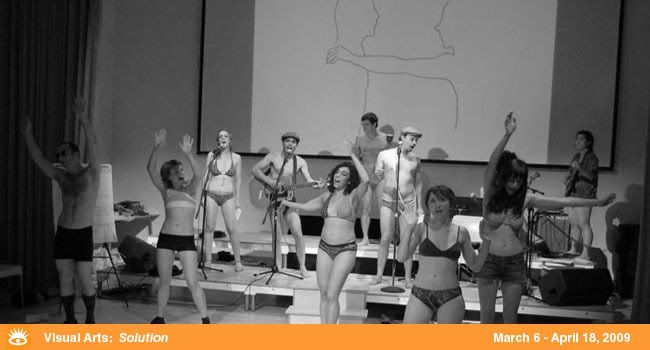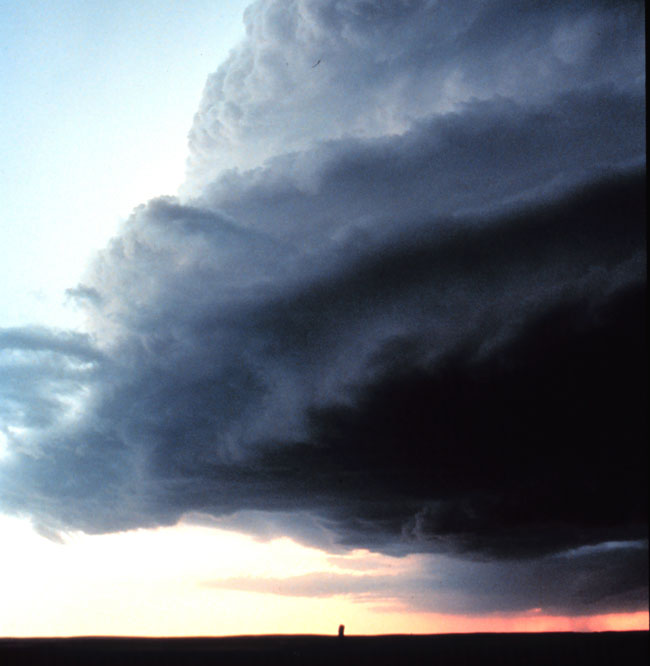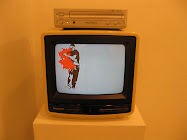 someone else's ArtCamp
someone else's ArtCampLast Saturday,
Caroline Collective and Grace Rodriguez sponsored the first Houston
ArtCamp, an artists’ counterpoint to their BandCamp events, which have aimed to provide local musicians with resources for getting gigs, presenting themselves to venues and labels, marketing and networking with other bands. Ostensibly replying to Wayne Dolchefinko’s attacks on the
Houston Arts Alliance, at ArtCamp it was decided first and foremost that no one wanted to talk about that anymore, and that the HAA does not provide resources for emerging artists anyway. By 10:30 am the affair was forgotten.
While the talk turned to addressing the needs of the artists and administrators in the room, a state of the arts discussion emerged, reflecting the dire concerns of organizations facing shrinking budgets and unaffiliated artists watching their opportunities evaporate into thin air. Two factions were talking at odds- those trying to expand their audience base and those trying to deepen the sense of community in their existing audiences. After a guy tried to sell everyone on buying space in the Houston Chronicle’s neighborhood pages the conversation turned away from the first concern; really it was pie-in-the-sky to be hoping to get non-art lovers into art events anyway. Most of the attempts to grow the audience of the arts require such a big upfront investment that they should be banished to the land of tax cuts.
The ad pusher left without saying a word. Administrators from organizations were trying to figure out what to do with their money, and artists protested that that had nothing to do with them- and they were right. The difference between the haves and have-not was palpable in their words. We spoke about Jonathan Glus, head of HAA, and what he meant to the Houston artworld. His background as an administrator in Pasadena, California left him without a connection to creating art, to artists in Houston, to the city he works for, and to reaching out to the community he ostensibly serves. This is part of the reason that the Houston Arts Alliance is so ineffectual, and why no faith is put in the organization for being able to help artists gain a foothold in galleries, museums, collections or the public eye.
Arts organizations and non-profits have only held power in the artworld since the National Endowment for the Arts stopped issuing individual artists’ grants in the early 90s, as Robert Mapplethorpe’s images were confiscated and Jesse Helms railed against the likes of Andres Serrano and Karen Finley. Houston’s The Art Guys were some of the last artists in America to receive an NEA individual grant, in 1995. Since then all art funding has passed through local or genre organizations, fracturing the illusion of objectivity that the NEA provided, and doling out money to art ‘warlords’ capable of sustaining their own gangs and squeezing others.
 someone else's cancer
someone else's cancerI was a jerk. I called arts organizations a cancer. They seemed to eat an immense amount of time and money, like a tumor’s highly concentrated capillaries stretching the capacity of a body’s circulatory system. I could image a room of quirky people talking at a cocktail party, New York and London and Paris the center of their own little circles, chatting away, making jokes, sharing food and drink. Miami and Rome join in, adding their 2 cents desperately. Some people sit on the arms of chairs, skinny little emaciated characters like Beaumont, Tallahassee and Dublin. They talk to themselves, eating dry crackers that they dip into cups of weak tea. Out of the kitchen lurched Quebec, her swollen face drawing breath in ragged gasps. A horrid profusion grew out of her head; her thyroid was swollen like a melon, taut and shiny. Under a muumuu I imaged the tortured body, gelatinous and out of proportion, limbs afflicted by all sorts of rashes and bedsores. I glanced back at New York as he let out a laugh and showed his bright, shiny teeth. A mean-looking lump blossomed on the left side of his forehead, but no one seemed to notice.
“It’s not that cancer is always bad. Sometimes they’re benign.” That didn’t seem to blunt the blasphemy I had spewed in the room. “Artists and administrators need to think from the bottom up as well as the top down. What would you do if the money wasn’t there? How would your mission statement manifest itself? How would your career advance?”
We took a break for lunch; Matthew went to get
Givral’s sandwiches. Some people left, some people smoked cigarettes behind the building. I met Elliot, who doesn’t smoke. He does make classical music though- which is a notoriously tough genre to work in outside of the official channels. He was really enthusiastic though, confident that a rising tide lifts all boats. Grace and I chain smoked, talking rapidly about all sorts of shit. Shawna from Diverseworks stopped by after watching us on the live feed in the morning. Rainey Knutson from glasstire.com showed up at 1.


 the first- Rauschenberg's glass tire
the first- Rauschenberg's glass tireRainey told the story of glasstire.com, how she started it out of her apartment when she was 28. The state needed it; the city of Houston needed it. Building the site in Photoshop and Dreamweaver, Rainey worked odd jobs designing websites to keep it up. Her husband Michael worked, and she felt supported enough to launch the venture from her bedroom. Ten years later she was married, her husband supported them as an artist, and she had just had a child, Tennessee. Glasstire is supported by grants, has a staff of four and employs writers from every major city in Texas. Everything cost more money now, and with the vast archive of previous material the cost of overhauling the site could approach $20,000. Even the internet has its bricks and mortar. Knutson quipped, “I am, as
Mark Flood would say, a leech on artists.”
After a short history of the website she launched into an art history of the past twenty years in Houston, from the explosion of alternative spaces in the late 80s and early 90s, when Sharon Engelstein ran an artist-run space, Wes Hicks started Commerce Street Artists Warehouse and The Art Guys threw exhibits out of their Heights studio. She described the hollow of the oughts, when the ground seemed to fall out from beneath the grassroots. The last few years had seen a reemergence of artist-run spaces, at which point we run into today. The ability for artists to create their own gravity, to take the first few rungs of the ladder themselves, was paramount in her thoughts.
To the assembled group no one could agree stronger than the next. The enthusiasm was there, but there is a difference between saying it and doing it. To this end
Matthew David Herrold, over uStreamTV, suggested setting up a wiki, a listing of non-profits, alternative spaces, artist venues and people’s living rooms and garages. Whoever wants to host an exhibit can put their space out there for artists to see. People can write entries, rate them, add to descriptions and grow the network between artists and spaces. As long as the word gets out the tool may become an immense help for emerging artists, but I do fear that it will only unsheathe the cliquishness that is the root of the artworld anyway. So when’s the next ArtCamp?
plus+++ links:recap by
Matthew Wettergreenstreaming video captured by
Grace Rodriguez



































